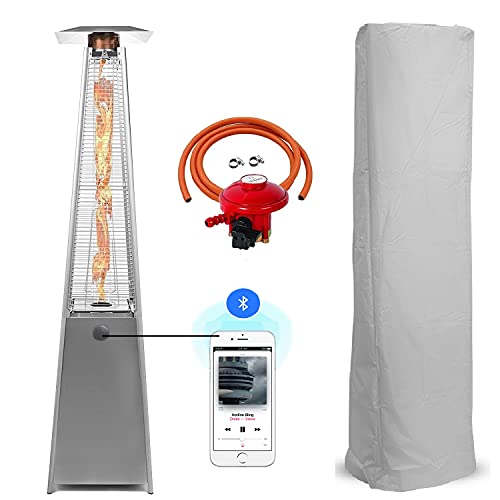24 Hours To Improving Price Of Patio Gas

Lowering the Price of Patio Gas
Patio gas is an liquefied petroleum (LPG) used in patio heaters as well as BBQs. patio heater gas cylinder is available in small 'patio bottles' that are designed to be compatible with regulators, making it easy to connect them to your barbecue.
It is highly efficient in hot temperatures and has a low melting point.
Cost of Gas
Patio gas is a type of propane or butane that is used for barbecues and outdoor heating. It is typically delivered in large bottles of propane or butane, and is controlled by an adjustable regulator clip-on. This type of gas costs less than natural gas which is delivered through pipes. However the cost of installing or repairing gas lines will depend on the type and material of pipe.
Propane can also be bought in smaller cylinders, which are compatible with BBQs and patio heaters. These cylinders have either a 27mm clip-on or screw-on regulator and are filled at all propane dealers.
Bottles Cost
There are many ways to reduce the cost of patio gas. First, make sure to purchase your bottles in the early morning or late in the evening when prices are typically lower. Also, try to pump your gas when it's cool outside; hot temperatures cause the gas to expand, so you'll be paying for less-dense fuel.
Another way to reduce the cost of patio gas is to buy a reusable bottle, rather than using disposable plastic bottles. The Glaceau Smartwater is a popular choice, thanks to its lightweight weight and flip-cap design, which makes it easy to drink.
The Calor Patio (propane gas) Cylinder weighs 13kg and is ideal for barbecues, patio heaters with four burners or more. The price includes the cylinder as well as the valve. If you purchase your first cylinder and do not have a bottle to return you, add EUR20.
Cost of Regulators
There are a variety of gas regulators available for use in patios. But, they're not all the same. You'll need a regulator compatible with the type of gas cylinder you're using. A propane cylinder, for instance, will have an entirely different valve than one for butane. Both types of gas require different pressures to be released, so they cannot be used interchangeably without swapping the regulator.

There are various types of regulators, including screw-on and clip-on. Some include the pressure setting, restrictor and sensor in one body, while others are more intricate and could include several different components. The type of cylinder you're using will also affect the cost of the regulator. The smallest bottles come in a variety of sizes, however larger cylinders will cost more and require a bigger regulator. If your patio heater is powered by natural gas, the cost of a new gas line will raise the overall cost of installation. You'll also have to factor in the cost of a general contractor for the project, as well as any permit or inspection fees required by your local jurisdiction.
Cost of Installation
The cost of installation for gas in the patio is dependent on the type of system you have and the amount of pipe involved. For instance, installing an entirely new gas line from the main to the home typically costs around $20 per linear foot. This price includes the cost of laying pipes and connect appliances to the line. It also includes the cost of the materials such as steel and copper pipes that are more expensive than plastic pipes. An inspection for gas leaks will cost you an additional $50.
You can buy propane or butane gas in a tiny "patio bottle" that's designed with BBQs and patio heaters in the back of your mind. Its design is designed to work with the gas regulator that connects to a barbecue or the cylinder of a patio heater. Propane and Butane are both orange, and are equally effective as outdoor leisure products. Calor provides propane, patio gas, and butane LPG cylinders of different sizes. However, the bottles are not interchangeable. Each one requires its own specific gas regulator.
The gas regulator controls the pressure at which gas is released from the cylinder. This is important as it prevents gas from building to dangerous levels, which could lead to an explosion. Gas regulators come in a variety of sizes and styles. These include clip-on and screws-on versions. You'll need a separate gas regulator for your patio heater or barbecue since different cylinders require different quantities of gas and release gas at different pressure levels.
A gas regulator is a vital element of any gas appliance because it allows you to control the flow of gas and ensures that the system is safe for your use. Most regulators have screw-on connections, which makes it simple to connect the cylinder. Most hardware stores sell regulators. You can rent a gas regulator through the majority of rental companies.
The cost of installing a new gas line depends on the length and location of the pipe, the cost of materials, and the difficulty of the installation. Installing gas lines for a grill can cost between $20 to $25 per linear foot. This cost may increase when you install the pergola, gazebo or any other structure that requires anchor bolts in order to keep it in place. The cost of this project will increase due to the cost of trenching and excavation.
